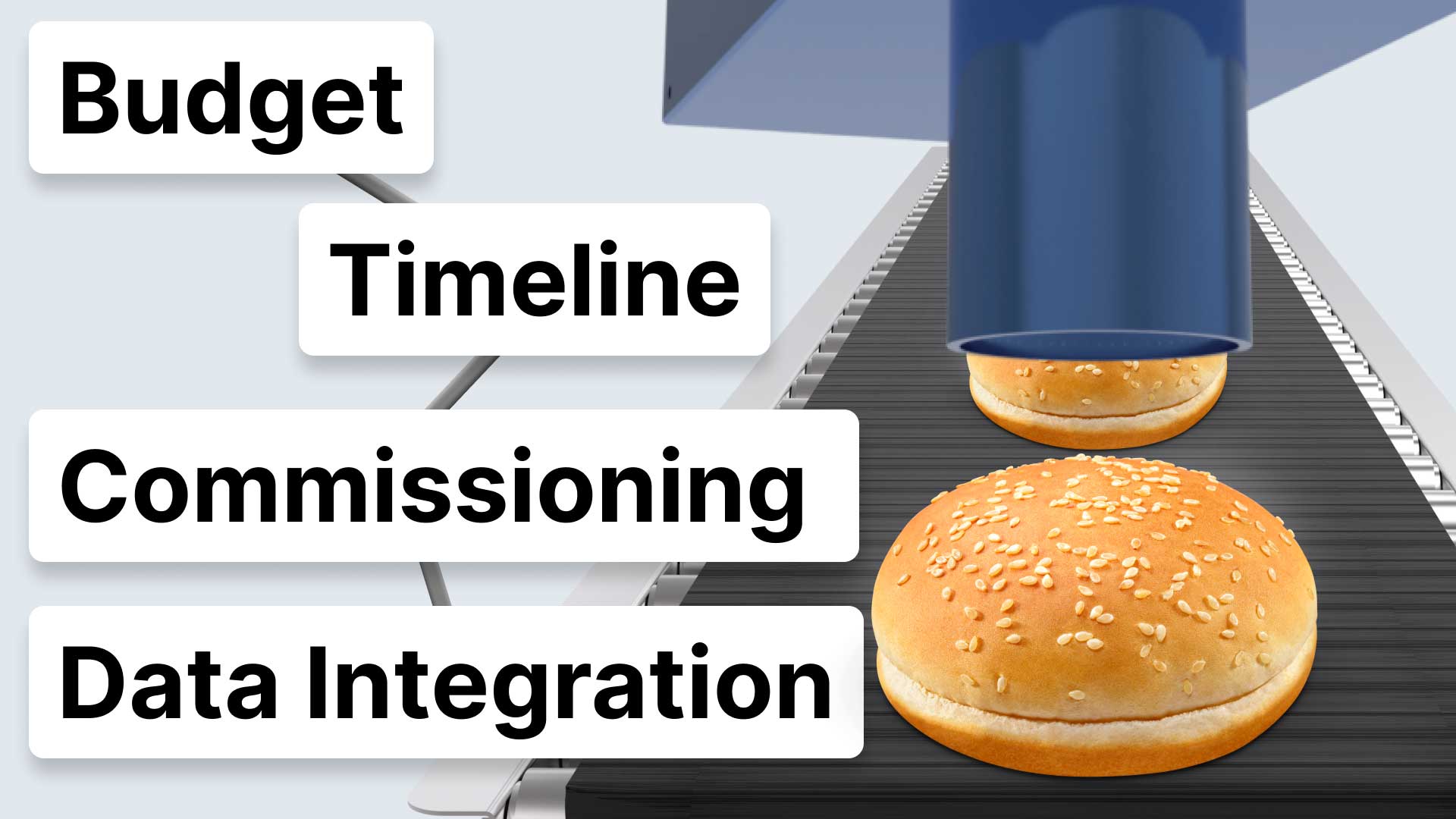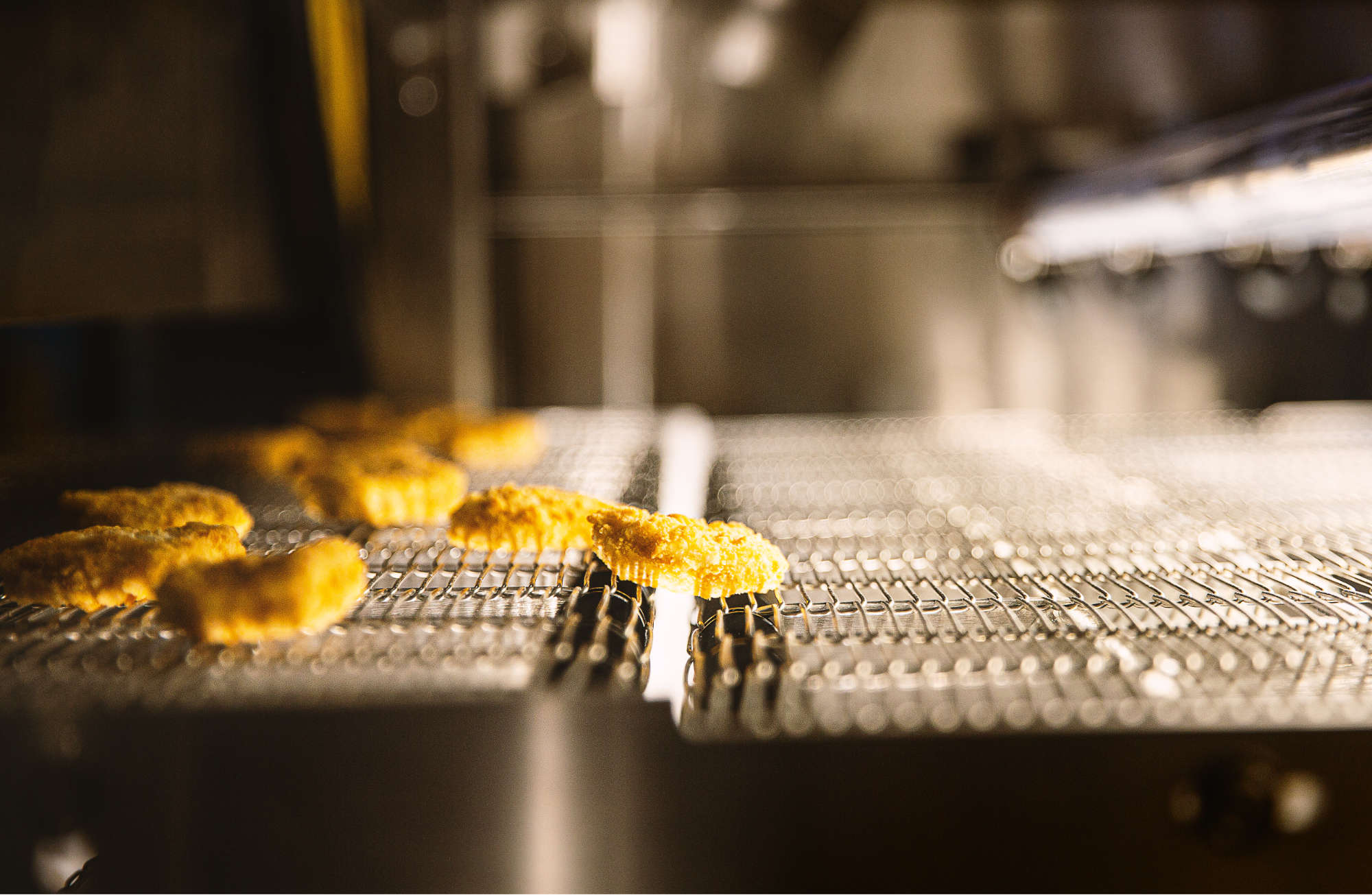How to Successfully Implement Vision Inspection Systems in Food Manufacturing

Considering vision quality inspection for your food production line? These systems are quickly becoming a must-have for manufacturers looking to boost quality, improve efficiency, and get smarter about their processes.
While these technologies are exciting and powerful, there is much more to the integration process than installing the equipment, plugging it in, and flipping a switch. Integrating a vision system requires time, focus, and total buy-in, from hardware considerations to data infrastructure and long-term maintenance within the organization.
This article provides a glimpse into what to expect, what to plan for, and how to ensure that your investment pays off in the long run.
Step 1: Start with a Solid Plan: Discovery & Specification
First things first, establish clear, realistic goals.
Are you trying to reduce product defects, detect foreign materials, automate inspections, capture more data, or all of the above?
Your preliminary discussions with your vision inspection system provider should cover:
- What you want your vision inspection system to accomplish (needs, pain-points, etc.)
- The scope of the project
- Budget
- Key success metrics
From there, you'll define things like hardware/software specs, line placement, and facility requirements.
Step 2: Define Key Technical Requirements
This part of the process is where things start to get more custom.
You’ll need to think about:
- Product and conveyor color – is there enough contrast for the cameras to "see" what matters?
- Camera setup – how many do you need, what kind, and what resolution?
- Lighting – different product surfaces might require different lighting types (diffused, reflective, polarized, etc.)
- Bottom-side inspection – if that matters to your product, you'll need the proper setup to keep lenses clean
The more precise the system setup, the better your inspection accuracy.

Step 3: Keep Product Handling Top-of-Mind
A vision system is only as good as how the product flows through it.
That means considering:
- Product size, shape, texture (e.g., soft, crumbed, bulky)
- Flow and orientation – is your current conveyor system setup with diverters and rerouting?
- The type of rejection system (air jets, paddles, retractable belts, etc.)
Does your packaging system depend on lane balancing? If so, ensure a lane balancing method is in the plan; otherwise, you risk jams and slowdowns.
Step 4: Keep it Clean
Sanitation matters—a lot.
Dirty lenses and lighting are the #1 reason vision systems underperform. So be sure to:
- Assign clear cleaning responsibilities (operations, sanitation, routine inspection of components)
- Consider installing air nozzles or blades if your product leaves behind debris
- Keep conveyors in good condition
- Consider screens ahead of the inspection system to remove particulates, liquid, etc.
Does your facility have any special requirements, such as washdown specs or specific chemical compatibility? These are important considerations, too.
Step 5: Think About Data Early
One of the best parts of modern vision systems is the data—real-time stats, images, pass/fail ratios, alarms, and more, all of which contribute to a robust quality control system.
But you need the proper IT infrastructure to support it:
- A fast, stable internet connection supports remote support and diagnostics
- Secure data storage (on-site server or cloud)
- Dashboard tools
- Integration with systems like Power BI (if needed)

Step 6: Budget with the Big Picture in Mind
Of course, you’ll need to budget for the system itself, but don’t forget the surrounding costs:
- Capital expenses: cameras, lighting, custom hardware
- Engineering/contractor work: modifying the line, installing equipment
- Ongoing costs: training, cleaning, support, service contracts
Bottom line—budgeting isn’t just about price tags; it’s about aligning your scope with your investment.
Step 7: Project Management is Key
Rolling out a vision system usually takes 6–12 months. That’s a good chunk of time, but provides ample time to develop sound strategies with various teams inside and outside the organization, like:
- Your internal teams (operations, quality, IT, management)
- Contractors (for line changes)
- The system provider (like KPM’s commercial and engineering teams)
A dedicated project manager will help keep everything moving.
Step 8: Install, Commission, Train
Here’s how it usually breaks down:
- Your team/contractors handle installation—modifying the line, connecting power, air, and internet
- KPM handles commissioning—power-up, calibration, test runs, final software tweaks, and operator training
Good training = fewer headaches later on.
Step 9: Set Yourself Up for Long-Term Success
Once the system’s up and running, the real work begins.
Keep it running smoothly with:
- A strictly-followed cleaning routine (yes, again—it's that important)
- Routine checks to ensure system calibration
- Annual maintenance by certified technicians
Also, consider designating a clear System Owner—someone internal who knows the system inside and out and acts as the point of contact with KPM. If you work for a larger company, assigning a Global Quality Systems Manager to oversee multiple sites may be possible.
Is a Vision System Right for You?
A vision inspection system requires upfront planning, but with the right partner and process, it's worth it.
Ready to explore your options? Contact KPM Analytics. We'll help you find the right solution for your production line.
Other Posts in the Series
Vision inspection is a food safety and quality system that uses cameras and computer algorithms to detect defects, contaminants, and other quality issues in food products.
Vision inspection systems can detect a variety of defects, including discoloration, foreign objects, missing pieces, and misshapen products.
Yes, in most cases we can customize an Over-Line or In-Line system to work with your existing configuration. To be sure, reach out and discuss your ideas with our specialists using the form on our contact page.
Related Blog Posts
















